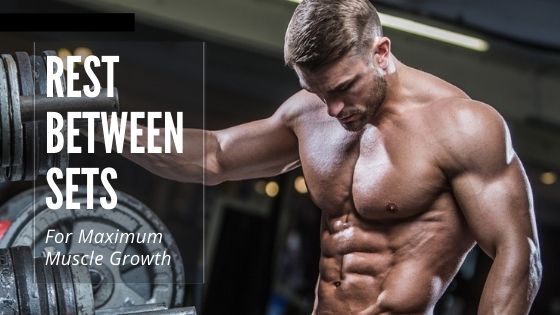
Excessive rounding puts more shear stress on the spine, which can increase our risk of injury. You’ve probably heard of the dangers of letting your back round in the deadlift. That gives them a great growth stimulus as well. And because the weight is so heavy, it’s actually quite common for people to reach failure on the deadlift because their spinal erectors are fatigued. Muscles worked by the conventional deadlift.īut to keep our backs from rounding over, we also need to stabilize our spine with our spinal erectors.
#Rest time between deadlift sets full
It also works those muscles through a full range of motion and challenges them under a deep stretch, which is fantastic for stimulating muscle growth. We lift the weight up by flexing our glutes and hamstrings, by thrusting our hips forward. And that means that it actually does quite a good job of brining all of those muscles close enough to failure to stimulate a robust amount of muscle growth.

It’s one of the only lifts where your limiting factor could be your arms, torso, or legs. But probably not enough to provoke much muscle growth, especially once you get beyond the beginner level.īut with a deadlift, you’re just as likely to fail because of leg strength, hip strength, back strength, or grip strength. Yes, you might call back squats full-body lifts. What makes the conventional deadlift special is that it’s perhaps the only bonafide full-body lift. The conventional deadlift is the normal, “conventional” way of deadlifting, where we set up with a fairly narrow stance and lift the barbell from the floor, like so: There are a few different ways of deadlifting, ranging from the Romanian deadlifts (which are great for our hips) to sumo deadlifts (which are great for our quads).

Most guys who are interested in strength favour the conventional deadlift, which is wise-and we’ll explain why-but they deadlift for low reps and drop the bar to the ground after every repetition, making it worse for building muscle mass. And given how many different sorts of adaptations deadlifts provoke, it’s not surprising that some ways of deadlifting are much better for building muscle than others. Squats and deadlifts train different muscles, with the front squat emphasizing the quads and upper back, and the deadlift emphasizing the hamstrings, glutes, and entire back.Īs with all the big lifts, though, there are several different ways of deadlifting, each with different pros and cons.The strength we develop with deadlifts transfers near-perfectly to our daily lives, making us look strong because we are strong.Deadlifts are one of the best ways to increase the density of our bones and the health of our spines, making them great for our health and longevity.Deadlifts bulk up our traps, spinal erectors, and glutes, as well a number of other muscles in our upper backs, all of which is great for improving our aesthetics.Even then, the deadlift has a few unique advantages:

When it comes to bulking up, the only lift that can rival the deadlift in terms of sheer muscle growth is the squat (and especially the front squat). They’re hard, tiring, and absolutely amazing for building muscle, gaining strength, improving our fitness, and becoming much better looking.

#Rest time between deadlift sets skin
Deadlifts are one of the only true full-body lifts, challenging our muscles from our fingers down to our toes, stressing our bodies from the skin on our palms all the way down to our bones.


 0 kommentar(er)
0 kommentar(er)
